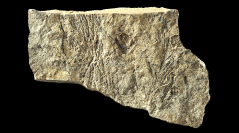

 Geodiversitas
41 (3) - Pages 125-142
Geodiversitas
41 (3) - Pages 125-142Alonissos (Iliodroma) Island is really famous to palaeobotanists because of the type locality of Glyptostrobus europaeus (Brongniart) Unger only. Since the first report of the latter holotype no palaeobotanical work has taken place in Alonissos. This is the first research of the fossiliferous locality, along with new palaeobotanical, palynological and gastropod findings, revealed after 200 years. Among the collected material, a xylitic specimen was studied and identified as Pinuxylon alonissianum Mantzouka & Sakala, sp. nov. The presence of this species points to botanical affinities with sections of Diploxylon Pines (Pinus leiophylla var. chihuahuana (Engelm.) Shaw, P. arizonica Engelm., P. arizonica var. cooperi (C.E.Blanco) Farjon, P. engelmannii Carrière and P. jeffreyi Balf.) especially from Central America (Sierra Madre Occidental and Oriental of Mexico, Arizona, California, Oregon and Sierra Nevada). This is the first research of this kind revealing as the Nearest Relative bioprovince of the studied Greek fossil pine wood Central America and not Himalayas or Asia. Moreover, a palynological study and an analysis of fossil molluscs were carried out for the first time, giving more data regarding the palaeovegetation and palaeoclimate of the area. Finally, the holotype of Glyptostrobus europaeus (Brongniart) Unger, housed in the collections of the Muséum national d’Histoire naturelle, Paris (MNHN), is found, photographed and presented for the first time.
Alonissos (Iliodroma) Island, Glyptostrobus europaeus, fossil wood anatomy, conifer, Diploxylon Pines, new species